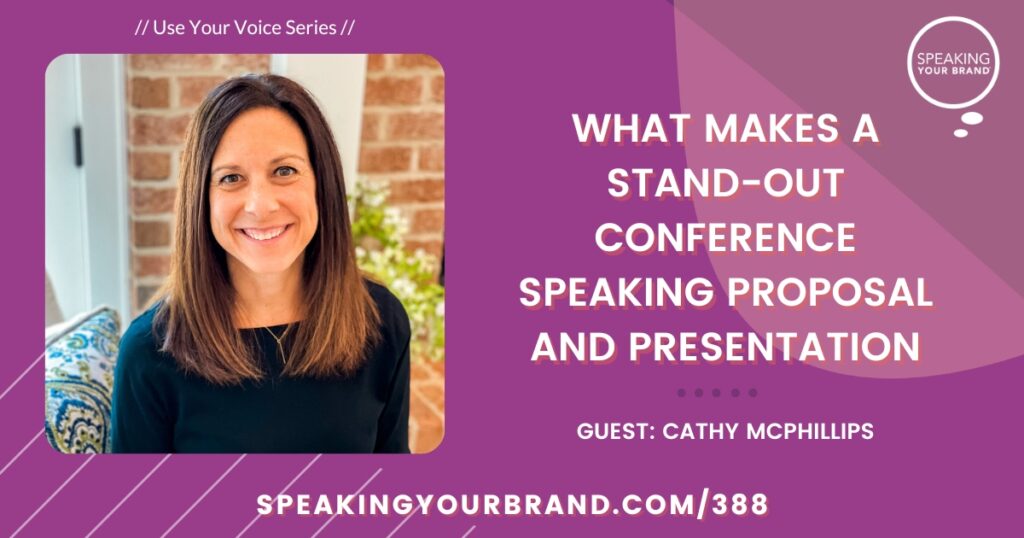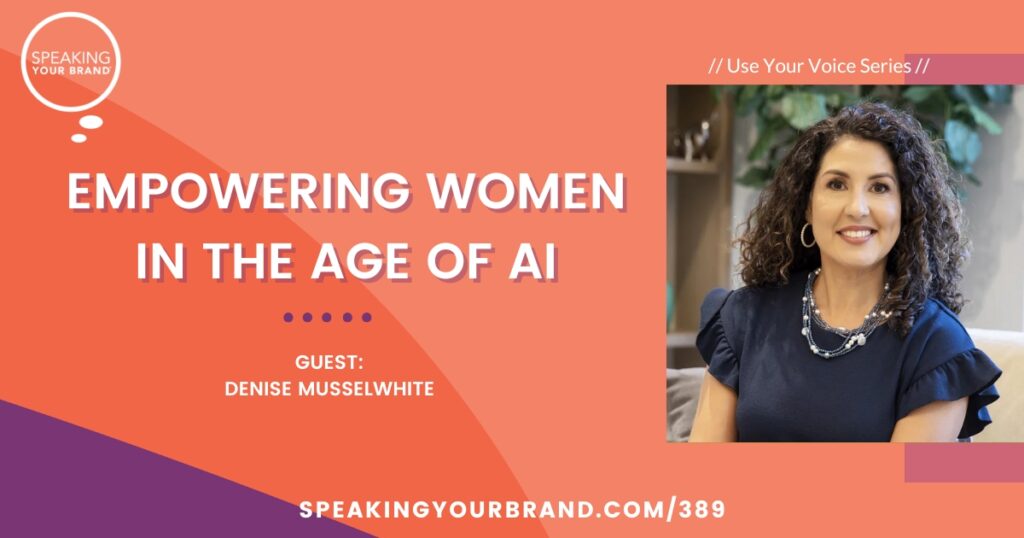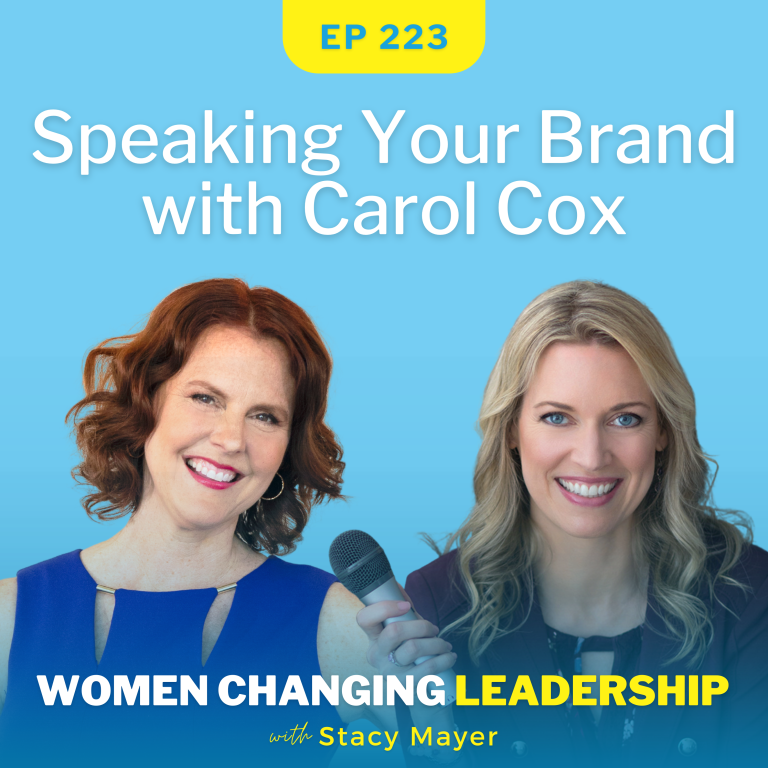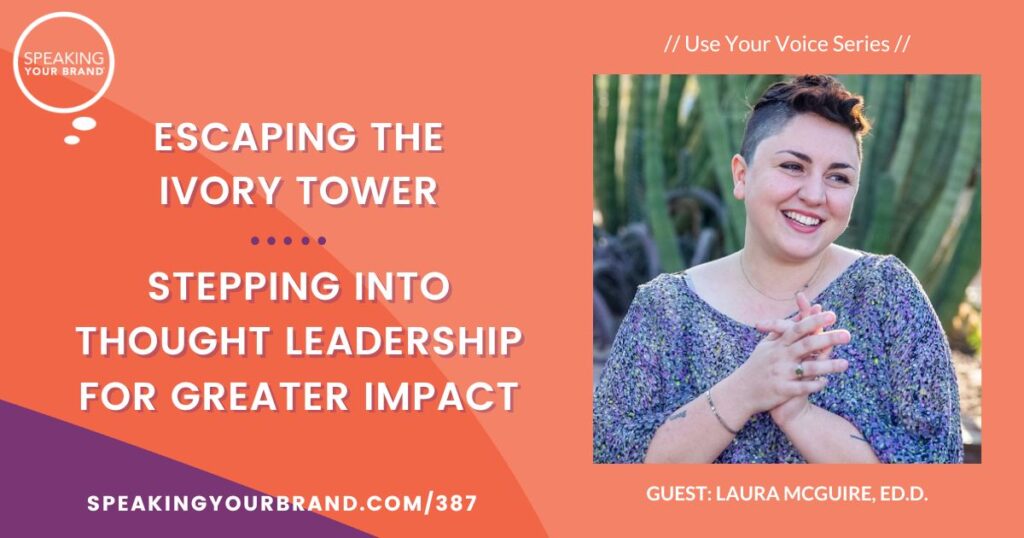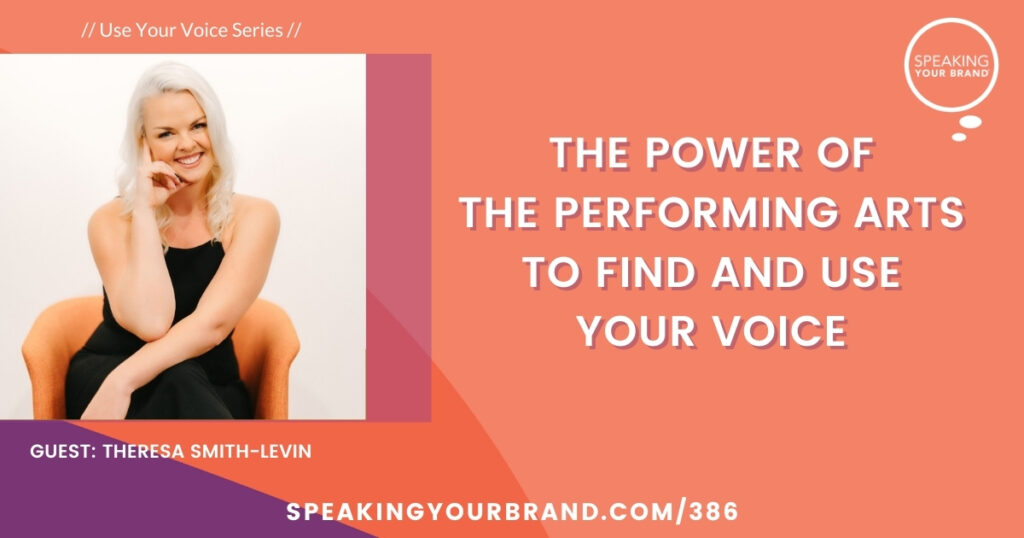Have you attended a talk recently (online or in person) where you got bored and started daydreaming about how to gracefully exit without being rude?
Perhaps you saw someone else leaving and you considered hopping out right behind them down the aisle and out the doors. Or you wondered if you could just close the Zoom window without anyone noticing?
I know I’ve had those experiences as an audience member – and that’s definitely not something you want your audience to experience when you’re the presenter.
As speakers, we want to deliver a really great experience, get excellent feedback, and get leads and clients.
There are 5 ways I’ve seen speakers bore their audiences in 2022. In this countdown I’ll also share what you can do instead, whether you’re giving a talk online or in person.
#5: Have A Weak Start
Here’s what happens: the presenter starts the talk but it’s all about them – their bio, their logos, their background, their entire history, what brought them here, and what they’ve been doing for the past 10 or 15 or 20 years in their career. You’ll notice this at conference sessions where the speaker has their Title slide up and then the very next slide is their Bio slide. And then the next slide is their About slide. So they’ll have their logos, their photo, bio, some history about themselves, and then they’ll talk about what brought them to where they are today. It’s a painful 10-15 minutes for the audience.
Don’t get me wrong. You do want to talk about your bio and your credibility but not at the very beginning of your presentation. That early in your presentation, the audience doesn’t care about you yet.
You need to first show them that you are there for them and provoke their curiosity.
Here’s what to do instead:
Start with audience questions. Ask them about their particular goals, the challenges they’re facing, or about their industry. That way they understand from the start that you are interested in them. You’re validating that you understand their goals, what’s getting in their way, and how you can help.
You can also start with a compelling story or a cultural reference. In the case of a compelling story, this could be a story that’s related to you – and this could be a chance to boost your credibility. But it needs to be done in a storytelling fashion. Take one particular situation that you had, like one moment in time, one day where everything changed or you had a paradigm shift.
One of the most rewarding outcomes of our Thought Leader Academy online coaching program is the creation of your own story repository – a place to keep and recall salient stories that reinforce your point, connect your audience to you emotionally, and establish your credibility as a thought leader. You can even start this on your own in a simple spreadsheet.
#4: Go Too Basic or Too Advanced
This next mistake is when speakers don’t have the right level of content. The content is either too basic for the audience or too advanced. From my years as a speaker and speaking coach, most of what I see is that the content is too basic and not specific enough to that audience, industry, or event goals. If you’re not sharing the right level of content, your audience gets bored, they disengage, and they may think you’re not the best solution for them.
This is one of the reasons to develop a Signature Talk. When we work with clients on their talk, we identify what the key points are that you want to make. We train you to go into more detail on some of the points or pull back and provide a more foundational discussion. This is all based on who the particular audience is that you’re going to be presenting to and it generates a lot of confidence.
You want to make sure that your content and your presentations align with the audience so that they think, “This presenter understands my problems and my goals and my challenges and they get me, so I should work with them.”
Here’s what you can do. Find out where your audience is in their journey. Are they beginners? Are they advanced? What is their goal? What are the obstacles in the way? Talk to the event organizer before your presentation. Ask them about the audience. Or try a show of hands poll at the beginning of your talk and let the audience tell you their level.
Another way to find out what level of content you should be sharing is to ask on social media, especially if you’re attending a larger conference. That conference will likely have hashtags related to their event so you can post on Instagram, Facebook, LinkedIn, or Twitter and use the conference hashtag to start asking questions related to your topic to get a sense of how familiar people are with it.
Lastly, ask yourself about your own ideal client – are they mostly beginners or are they advanced?
You want to align your content with who you want to attract as clients.
Because if you’re doing a session where it is a mixed audience and you know that you really like to work with clients who are more intermediate and advanced, you probably don’t want your content to be beginner level because that’s who you’re going to attract.
#3: Be Generic and Ramble
When presenters’ content is generic and unstructured, people start thinking it isn’t relevant to them or, worse, that the presenter is not an expert. Of course, as presenters, we’re experts in our topics and so we want to share it all in 20 minutes or 45 minutes, but we can’t. There’s just too much. We can’t download the 10, 15, 20 years we’ve been learning our area of expertise into an audience in that short amount of time. It is up to us as the speaker to curate that information and provide the audience with exactly what they need to know today or on the next step of their journey.
Content that’s generic and unstructured isn’t tied together and doesn’t build from one concept to the next. Along with this, I often see speakers who are afraid to give an opinion. They’re afraid to give their own perspective on a topic. And by doing so, they are not shifting their audience’s perspective; they’re not shifting their audience’s understanding.
And really what we all need nowadays more than just information, is understanding, perspective and transformation.
Presenting content that is generic and unstructured is lazy because you’re forcing the audience to do the work of creating structure and meaning from your area of expertise. You’re the expert on this topic, and so you should tell me what I should do based on the particular problem that I’m having.
So here’s a solution: Have a perspective and understand where your audience is at and share your expert recommendations. Give your audience a new perspective, something new for them to think about. I did this back in March 2020, when I released a podcast episode called A Feminist Approach to Public Speaking. I gave the audience a new perspective regarding how public speaking can be approached from a feminist angle. Original, focused, and opinionated.
The other factor is that our brains want simplicity. This is where having a really clear framework comes in. Another element of building a Signature Talk is to get a framework in place. Sometimes it turns into an acronym or an alliteration or even a visual shape. We have frameworks that we use here at Speaking Your Brand. We have our Signature Talk Canvas® framework, which is based on three-act story structure that we use when we work with clients to create their Signature Talk. We have our V.O.I.C.E Thought Leadership model. We have our I.D.E.A.L Story Ingredients. These frameworks make it easy for us to convey key information and it makes it easy for the audience to absorb it, apply it, and remember it.
#2: Have A One-Way Conversation
This is what happens when a presentation or talk turns into a lecture. Now, I love school. I was in a PhD program and then ended up finishing with a master’s degree in history. I thought I was going to become a professor at a university. So I’m all about lectures. I attended many, many lectures when I was in college. But even back then, I really appreciated professors who had a conversation with students.
When you don’t give the audience a chance to share and participate, then they’re probably not going to learn as much.
It’s through the application of what we’re learning that really helps new ideas to sink in.
The solution here is to build audience engagement into your presentation. Don’t wing it. Sometimes we think to ourselves, “I’ll just wait for someone in the audience to raise their hand, or I’ll do Q&A at the end.” But if you do Q&A at the end and you’re not engaging the audience along the way, they’re probably going to zone out and start checking their phones. (Guilty!)
We address audience engagement planning with our Signature Talk Canvas®. It’s a poster board with sticky notes on it, and there are four different colored sticky notes. A color represents a certain talk element. We have pink, orange, yellow and blue; and the orange sticky notes are for audience engagement. The reason we use the colors when we work with our clients on their talks is that we want to make sure we have a balance of the colors on the board for a well-developed Signature Talk.
We’ll go through the canvas and notice, “Oh, there’s a section here where we don’t have any orange post-it notes.” That means there’s no audience engagement in that section of the talk. We need to make sure to go back and add those in.
#1: Rush the Ending
More times than I wish, I see speakers going over their allotted time or cutting it short due to lack of structure in their content. They don’t have a clear beginning, middle and end. So they don’t anticipate when their stories or key points might go too long.
Learning to construct talks that can expand and contract on-demand is one of the reasons speakers work with us. They want to build adaptability and confidence as premium, paid speakers who are good at generating leads for their business.
Other times the ending is rushed because presenters feel awkward mentioning their call to action or mentioning their sales pitch at the end. They end up rushing through their pitch, or they skip it entirely.
This not only weakens your lead generation from your talk, it also leaves your audience on a low instead of a high.
There is a thing in psychology called the recency bias or recency effect. This says we remember the thing that happened to us most recently. If your talk ending is rushed or skipped, that’s the main experience you’re leaving your audience with.
The best way to create a really strong ending is to tie it back to your opening. If you started with an opening story, or if you started with a video or cultural reference, bring that back at the end of your presentation and pair it with an inspiring call to action. Let your audience know that you believe in them; that you know they can achieve the goals that they have. You can certainly take audience questions at the end, but make sure it’s after that high note that marks a clear end to your presentation. People can then feel free to start filtering out while the others linger to ask deeper questions that matter to them uniquely.
TL;DR
Audiences in 2022 have more reasons and ways to be distracted and disengaged than ever before in speaking history.
As speakers, we want to deliver a really great experience, get excellent feedback, and get leads and clients.
These are the 5 ways I’ve seen speakers bore their audiences in 2022. If you want to learn what you can do instead, just scroll back up and give this post a thorough read.
Top 5 Countdown for Ways To Bore Your Audience in 2022:
5. Have A Weak Start
4. Go Too Basic or Too Advanced
3. Be Generic and Ramble
2. Have A One-Way Conversation
1. Rush the Ending
So, here’s what I want for you. I want you to have a confident, clear and compelling presentation. I want your audience to see themselves in the journey that you’re sharing with them so that they get the transformation that they’re seeking and you get leads, clients, and more and better speaking opportunities. I invite you to schedule a consultation call with us if you would like to find out how we can work together to create your Signature Talk and framework.
We have worked with hundreds of women entrepreneurs and we absolutely love what we do. You’ll have your complete Signature Talk ready to go, feel confident in it, and be able to easily adjust it depending on the audience, the length of time and the format. Will you be our next speaker success story?
Want to Know More About Speaking Your Brand?
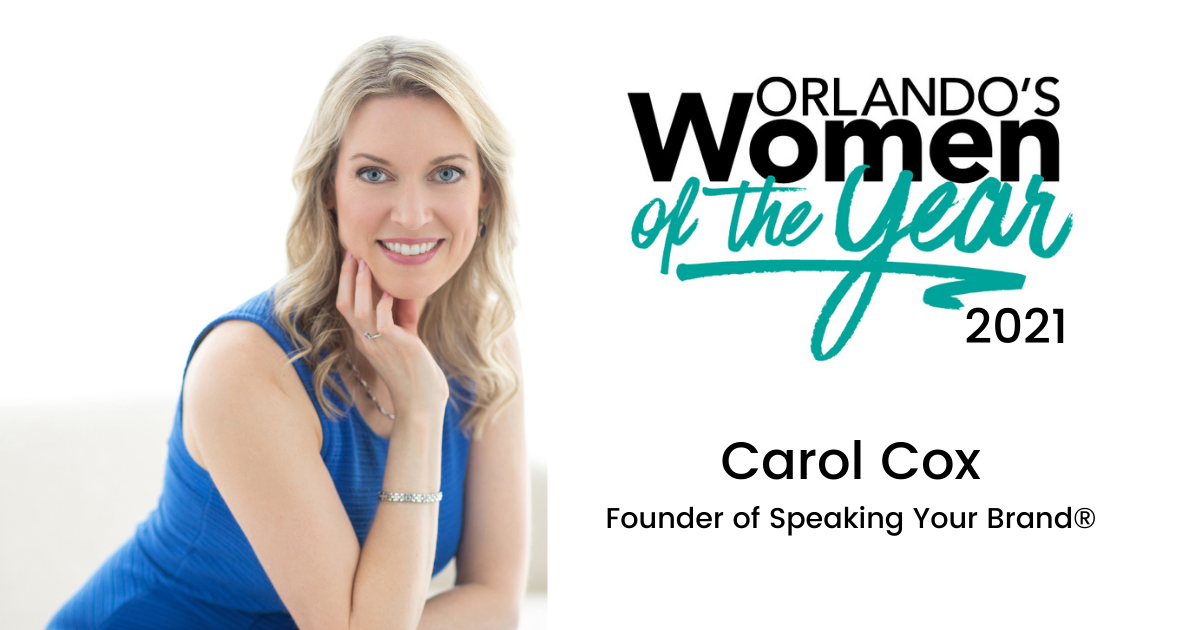
As founder and CEO of Speaking Your Brand ® I’ve developed a proven and unique framework called the Signature Talk Canvas® that we’ve used with hundreds of clients over the past 5 years.
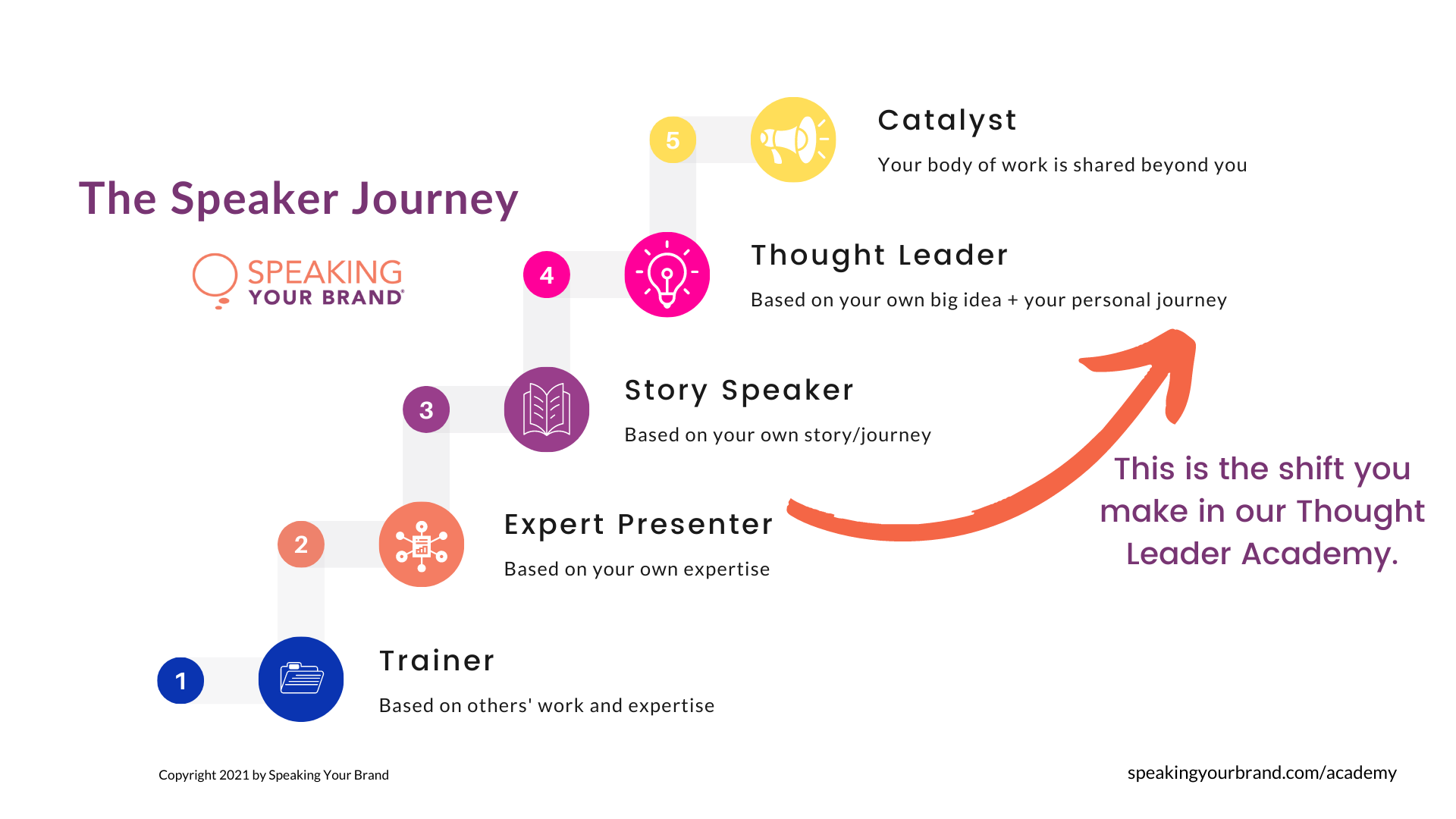
This structure enables you to take all of your expertise and knowledge AND bring in personal stories, client examples, audience engagement, humor and more, so you can really WOW your audience.
I have a Master’s degree in History (with a focus on Women and Gender Studies) from Emory University and nothing makes me happier than being surrounded by books (written by women!) and doing research.
Yet I’ve experienced what happens when I integrate personal stories and lessons into my talks and take the audience on a journey of discovery.
Here’s How to Go Further:
Check out my weekly podcast called Speaking Your Brand. Whether you want to craft a business presentation, a keynote, a workshop, or a TEDx talk, you’ll learn how to create compelling content, pitch conferences and organizations, and persuasively communicate your message to your audience. Listen here.
Connect with me on LinkedIn. I share tidbits, observations, lessons, and stories several times a week. Connect here. Let me know you came from the quiz!
Apply to join our Thought Leader Academy. This is our signature program for women like you to get the expert coaching (group and 1:1), support, accountability, and community you need to take your speaking to the next level. Learn more.
Get Our Free Thought Leadership Workbook
You may also like...
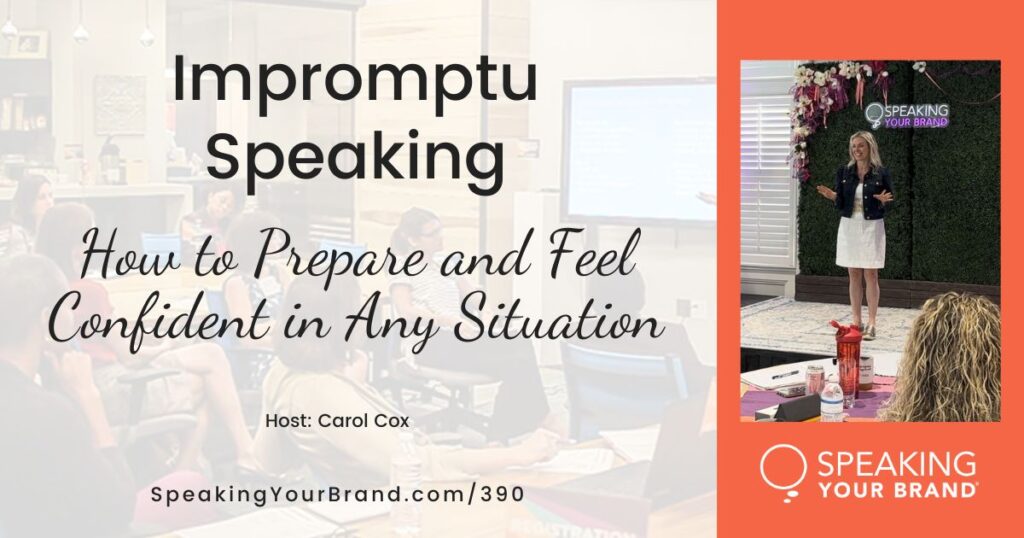
Impromptu Speaking: How to Prepare and Feel Confident in Any Situation with Carol Cox: Podcast Ep. 390
